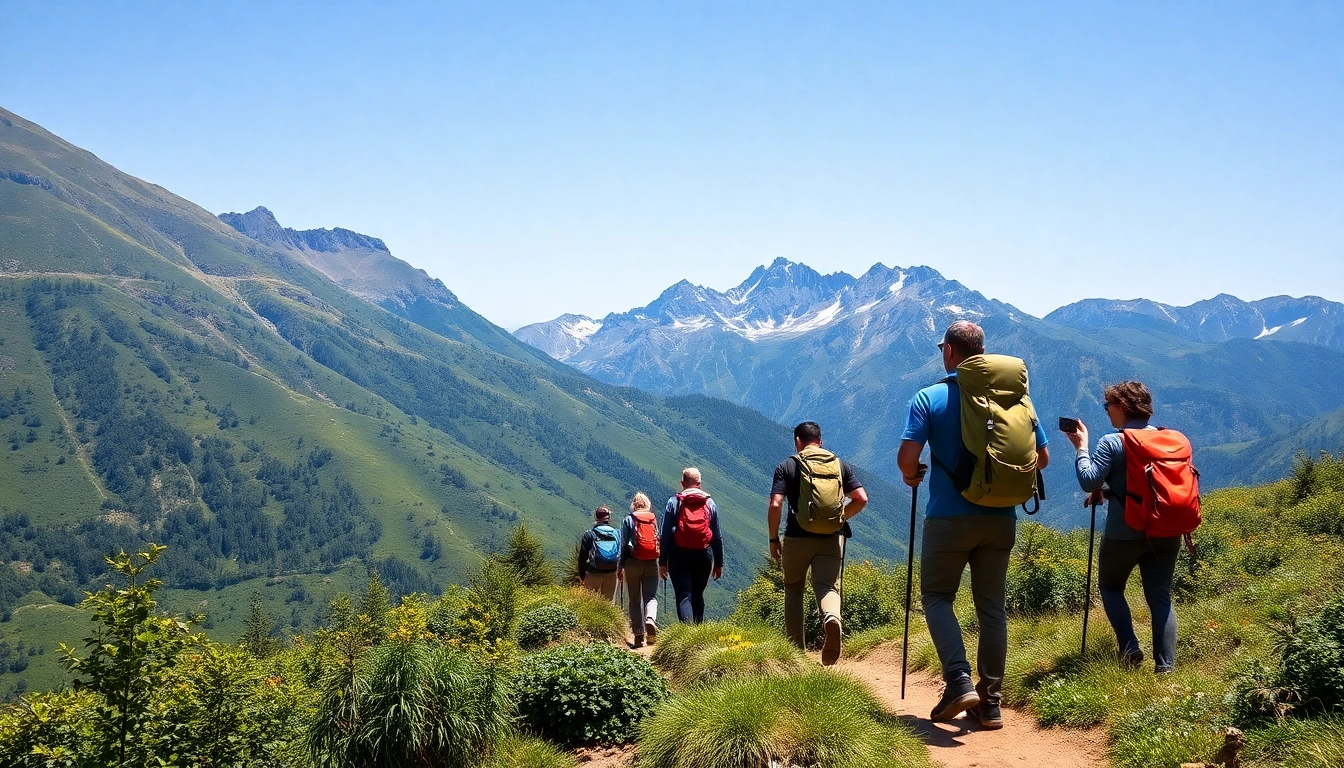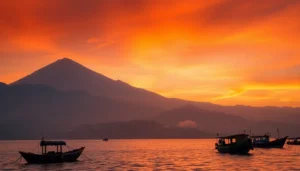Understanding Guided Hikes: What They Are and Why They Matter
Embarking on a hike can be one of the most enriching ways to connect with nature, challenge oneself, and discover new landscapes. Among the various ways to experience the great outdoors, guided hikes stand out as an exceptional option. They blend adventure with expertise, allowing hikers of all levels to explore safely and meaningfully. A guided hike involves traversing trails under the supervision of a knowledgeable guide who ensures safety, offers local insights, and enhances the overall experience. Whether you’re venturing through dense forests, mountain passes, or remote wilderness, guided hikes make this journey accessible, educational, and memorable.
Definition and Key Features of Guided Hikes
Guided hikes are organized outdoor expeditions led by trained guides equipped with extensive knowledge about the trail, local flora and fauna, cultural history, and safety protocols. Unlike independent hikes where trekkers navigate alone or with their group, guided hikes provide an expert who leads, navigates, and manages the logistics. The key features typically include organized itineraries, small or medium group sizes, professional guidance, prepared routes, and often, supportive amenities like refreshments or gear rental.
From the dense jungles of Indonesia to the rugged terrains of the Alps, guided hikes are tailored to various environments and experience levels. Guides are not only trail leaders but also educators, storytellers, and safety officers. They adapt the journey as needed based on weather, trail conditions, and group ability, making guided hikes highly versatile and inclusive.
Benefits of Joining a Guided Hike
Choosing a guided hike offers numerous advantages that elevate the outdoor experience. First and foremost, safety is paramount. Guides are trained in wilderness first aid, navigation, and emergency response, significantly reducing risks associated with unfamiliar terrain. They also possess extensive local knowledge, providing insights into the history, culture, and ecology of the area that you might miss on an independent trek.
Moreover, guided hikes are highly convenient. They handle logistics such as permits, trail planning, and transportation, allowing participants to focus solely on enjoying the journey. This is especially beneficial for travelers new to the region or less experienced in navigation and outdoor skills.
Guided hikes foster social engagement, connecting like-minded explorers in a communal setting. This social aspect enriches the adventure, turning it into a shared experience overflowing with stories, tips, and cultural exchanges. Additionally, guides often customize or suggest route modifications, ensuring tailored experiences that match your fitness level and interests.
Furthermore, guided hikes promote environmental stewardship. Guides emphasize Leave No Trace principles, educate hikers about local ecosystems, and encourage responsible behavior, ensuring the preservation of natural sites for future generations.
Common Types of Guided Hiking Experiences
The world of guided hiking is diverse, with experiences ranging from leisurely walks to challenging multi-day treks. Some of the most prevalent types include:
- Day hikes: Short, focused excursions typically lasting a few hours, ideal for beginners and those with limited time. These often include visits to scenic viewpoints, waterfalls, or cultural landmarks.
- Multi-day hikes: Extended excursions that span several days, often through remote landscapes, wilderness areas, or iconic routes like the Inca Trail or New Zealand’s Milford Track. Guides provide camping arrangements, meal prep, and logistical support.
- Adventure treks: Challenging routes designed for experienced hikers seeking adrenaline and endurance challenges, such as mountain passes or rugged terrains.
- Cultural hikes: Trails combined with cultural and historical immersion, where guides share local stories, traditions, and perhaps even community interactions along the way.
- Specialized hikes: Themed experiences such as bird-watching, botanical exploration, or photography-focused journeys, often tailored to specific interests, with expert guides providing relevant expertise.
How to Plan Your Perfect Guided Hike in Indonesia and Beyond
Choosing the Right Trail and Guide Service
Effective planning is crucial to ensure your guided hike aligns with your interests, skill level, and expectations. First, identify the type of experience you seek—whether a scenic day hike, cultural trek, or a multi-day adventure. In Indonesia, renowned destinations such as Lombok, Bali, and Komodo offer a rich tapestry of guided routes suitable for all levels. For example, Lombok’s Mount Rinjani offers guided multi-day hikes with spectacular volcano views and cultural encounters.
Next, select a reputable guide service. Look for certifications, positive reviews, safety records, and environmental policies. Trusted providers often have experienced guides who are trained in wilderness safety, first aid, and local cultural sensitivity. Ensure the guide service offers clear itineraries, flexible options, and transparent pricing. Personal recommendations from seasoned travelers or verified online platforms can help you make an informed choice.
In Indonesia, guided hike providers often include local tour operators specializing in eco-tourism and sustainable travel. These companies emphasize community involvement, environmental conservation, and authentic cultural experiences, enriching your journey beyond mere scenery.
Essential Preparation and Equipment
Preparation is pivotal for a safe and enjoyable guided hike. First, assess your fitness level and select a route suitable for your capabilities. Proper gear enhances comfort and safety; essentials include sturdy hiking boots, moisture-wicking clothing, a hat, sunglasses, sunscreen, and a daypack with water, snacks, and a first aid kit.
For multi-day hikes, additional gear such as sleeping bags, tents, cooking utensils, and appropriate clothing layers are necessary. Guides often provide or recommend specific gear, but always confirm what is included and what you need to bring.
Physical preparation—like cardiovascular exercise, strength training, and practicing hiking with loads—can significantly improve your experience, especially on challenging routes. Mental readiness is equally important; be prepared for variable weather, terrain, and the physical demands of the trail.
Lastly, familiarize yourself with the trail map, guide’s briefings, and safety protocols. In regions like Indonesia, environmental conditions such as tropical humidity, sudden rainfalls, and altitude changes require proactive planning to stay comfortable and safe.
Best Seasons and Weather Considerations
Timing your hike is critical for optimal experiences. In Indonesia, the dry season—typically from April to October—is ideal for most guided hikes, offering clearer skies, stable weather, and safer trail conditions. During these months, you’ll enjoy scenic vistas, wildlife sightings, and comfortable temperatures.
However, the wet season (November to March) can bring heavy rains, slippery trails, and increased risks of landslides or flash floods. While less suitable for some routes, guided tours may adapt schedules or routes to accommodate seasonal variations or focus on cultural activities indoor or in sheltered locations.
In other regions worldwide, the local climate and terrain dictate the best time for guided hikes. Always consult with your guide service about seasonal weather patterns, trail accessibility, and safety advisories before booking.
Tips for Maximizing Your Guided Hiking Adventure
Engaging Actively with Your Guide
Maximize your experience by engaging actively with your guide. Ask questions about the environment, history, and local customs. Share your interests and preferences—such as bird-watching, photography, or botanical interests—so guides can tailor certain aspects of the hike. Listen carefully to safety instructions and trail advice, and stay attentive to your surroundings.
Building rapport with your guide fosters a better understanding and allows for spontaneous learning opportunities. Remember, guides are passionate experts eager to share their knowledge; leveraging this relationship transforms a good hike into a truly enriching one.
Respecting Nature and Local Cultures
Responsible hiking preserves the environment and respects local communities. Follow Leave No Trace principles: pack out all trash, stay on designated trails, refrain from disturbing wildlife, and avoid picking plants or damaging habitats.
In culturally rich regions like Indonesia, be mindful of local customs and traditions. Dress modestly, ask before taking photos of people or sacred sites, and engage respectfully with local communities. Your attitude can pave the way for authentic interactions and mutual appreciation.
Capturing and Sharing Your Experience
Documenting your journey enhances personal memories and can inspire others. Carry a camera or smartphone to capture scenic views, wildlife, and cultural moments. When sharing on social media or with friends, highlight the environmental and cultural significance of the places visited, fostering greater awareness and appreciation.
Be mindful not to disturb wildlife or natural surroundings while taking photos. Guided hike companies often advise on eco-friendly photography practices.
Top Destinations for Guided Hikes and Why They Stand Out
Popular Guided Hike Spots Worldwide
The world boasts an astonishing array of guided hiking destinations, each offering unique landscapes and cultural experiences. Classic spots include:
- Mount Everest Base Camp Trek, Nepal –Challenge and awe amidst the Himalayas.
- Inca Trail to Machu Picchu, Peru – A blend of archaeology, cloud forests, and mountain vistas.
- Swiss Alps, Switzerland – Stunning peaks, pristine lakes, and traditional villages.
- Grand Canyon, USA – Dramatic geology and sweeping vistas.
- Trolltunga, Norway – Iconic cliff viewpoint over fjords.
These destinations are popular not only for their breathtaking scenery but also for well-established guided services that ensure safety and enrich the experience.
Hidden Gems for Unique Guided Trails
Less trodden paths and hidden gems offer a sense of exclusivity and discovery. Examples include:
- Simien Mountains, Ethiopia – Rugged terrain with endemic wildlife like Ethiopian wolves.
- Lesser-known trails in the Carpathian Mountains, Romania – Fairy-tale forests and traditional villages.
- Undiscovered routes in Indonesia’s hidden islands and jungle treks, such as Sumba or the remote rainforests of Borneo.
- The Azores, Portugal – Volcanic landscapes and lush greenery.
These hikes often involve specialized guides and bespoke services, providing authentic experiences away from tourist crowds.
What Makes a Guided Hike Memorable
A guided hike becomes unforgettable through a combination of spectacular scenery, cultural immersion, guide expertise, and personal challenge. The best guides foster connection—between hiker and environment, history, and local communities. Participating in activities like local food tasting, learning traditional crafts, or night hiking can elevate the experience further.
Personal highlights often include reaching a scenic viewpoint at sunrise, witnessing rare wildlife, or engaging with local people, leaving lasting memories and a deeper understanding of the region.
Enhancing Your Journey: Additional Resources and Expert Advice
Recommended Gear and Accessories
Preparing the right gear is critical. Essential items include sturdy hiking boots, quick-dry clothing, layered apparel for fluctuating temperatures, a hydration system, sun protection, and a multi-tool. For longer trips, packing lightweight camping gear, a GPS device or map, and emergency supplies is advised. Quality gear reduces fatigue, prevents injuries, and enhances comfort, especially in remote or challenging terrains.
Safety Tips and Emergency Preparedness
Prioritize safety by always informing someone of your itinerary, carrying a fully charged communication device, and understanding basic first aid. Pay attention to weather forecasts and trail conditions provided by your guide. Recognize signs of altitude sickness or fatigue, and know how to respond to emergencies. Guides are trained to handle crises, but personal vigilance is key for a safe adventure.
Finding Trusted Guided Hike Providers
Reliable companies are certified, have positive reviews, and prioritize environmental and cultural sustainability. Look for organizations with experienced guides, transparent pricing, clear safety protocols, and local community involvement. Resources such as TripAdvisor, travel forums, and dedicated eco-tourism platforms can help identify top-rated providers. In Indonesia, specializing in sustainable tourism, many local operators offer authentic guided experiences that support conservation efforts and local economies.


